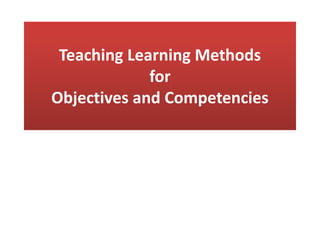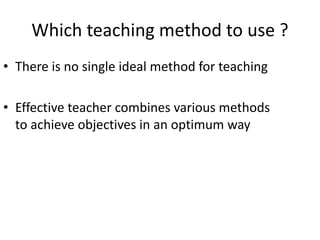This document discusses various teaching and learning methods that can be used depending on the objectives and competencies being taught. It describes different methods such as lectures, seminars, group discussions, role plays, demonstrations, tutorials and workshops that target different domains of learning. The key factors to consider when choosing a method include the domain of learning, level of students, resources available and time. Effective teachers combine multiple methods to achieve learning objectives.





















































































